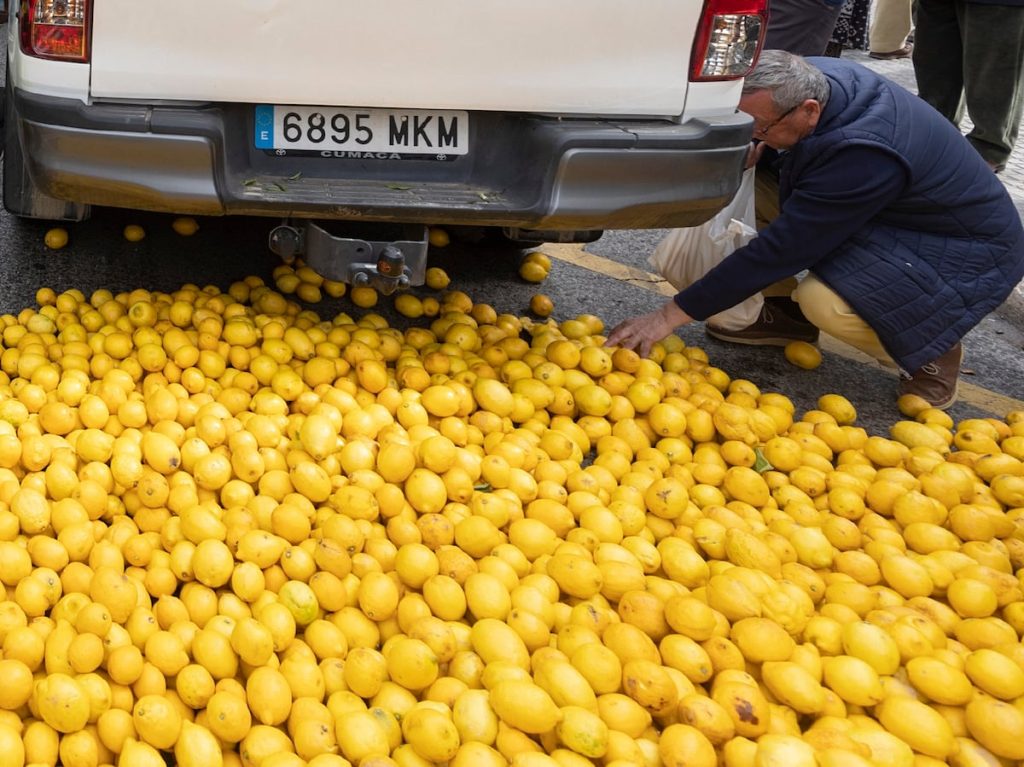The latest estimates given this week by the agricultural union COAG predict that in the 2023-2024 season, around 400,000 tons of lemons will be discarded in the fields of Spain that cannot be sold, close to 27% of the expected production. This massive waste amounts to losses valued at 120 million euros, which Spanish farmers blame on other citrus fruits entering the European Union from countries such as Turkey, Egypt, Argentina, or South Africa; investment funds that disrupt the market; supermarkets that only want aesthetically perfect fruit; the increase in pests; and adverse weather conditions. However, another part of the sector openly recognizes that the main reason for this lemon collapse is the disproportionate increase in cultivated hectares in the Spanish Levante in recent years.
The World Citrus Organization (WCO) states that the main cause of the disaster is the excessive growth of crops in the country, questioning the criticism of imported lemons when Spain is the leading market and controls the situation. They emphasize the need for competition in markets and point out that similar situations occur in other European countries as well. Ailimpo, the Interprofessional Association of Lemon and Grapefruit in Spain, not only distances itself from blaming others but also admits the need to reduce the cultivation area in the country to rebalance supply and demand, proposing a more environmentally friendly approach. This includes promoting regenerative agriculture and managing lemon orchards as forests to promote carbon and biodiversity credits.
José Antonio García, director of Ailimpo, attributes the current problem to excessive production, noting a significant increase in cultivation area from 36,000 hectares to nearly 53,000 hectares in eight years. This expansion was driven by attractive profits that led farmers to plant more trees and attracted other investors. Pedro Gomáriz, responsible for citrus at COAG, acknowledges the overproduction in the country but attributes it to factors such as the excessive amount of lemon from third countries entering the EU, which they consider unfair competition due to different regulations and cheaper labor costs.
According to Ailimpo’s analysis of lemon consumption data in the EU between October 2023 and March 2024, a large majority of lemons consumed in European countries during this period came from Spanish fields, with a small percentage originating from Turkey. These figures are similar to those of previous years and do not significantly contribute to the current disaster in the lemon market. While blaming supermarkets, investment groups, and climate events for the crisis, Gomáriz minimizes the impact of planting more lemon trees in Spain, considering it a natural cycle in agricultural sectors driven by profitability.
Ailimpo, representing the Spanish lemon sector, focuses on solving the financial losses of the current season while also looking towards more environmentally friendly practices for long-term profitability. They advocate for regenerative agriculture in citrus crops as a way to improve soil quality, biodiversity, water retention, erosion prevention, fertility, and carbon absorption, generating carbon credits. This approach, although seemingly futuristic, is already successful in countries like the UK, Australia, and New Zealand, where agricultural activity contributes to biodiversity conservation. A shift towards greener practices is seen as essential for maintaining the economic viability of the sector in the future.














